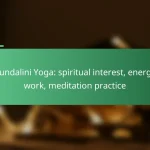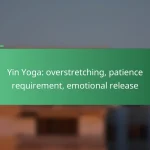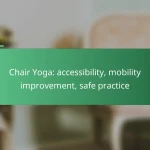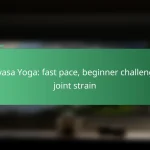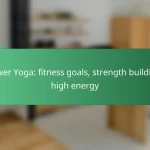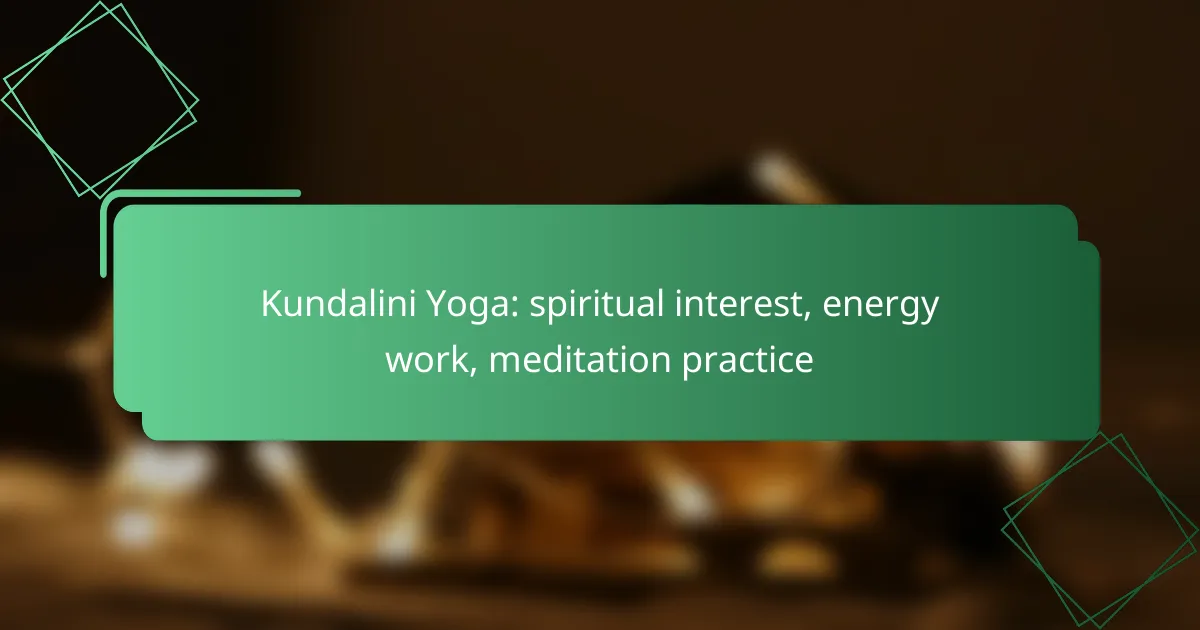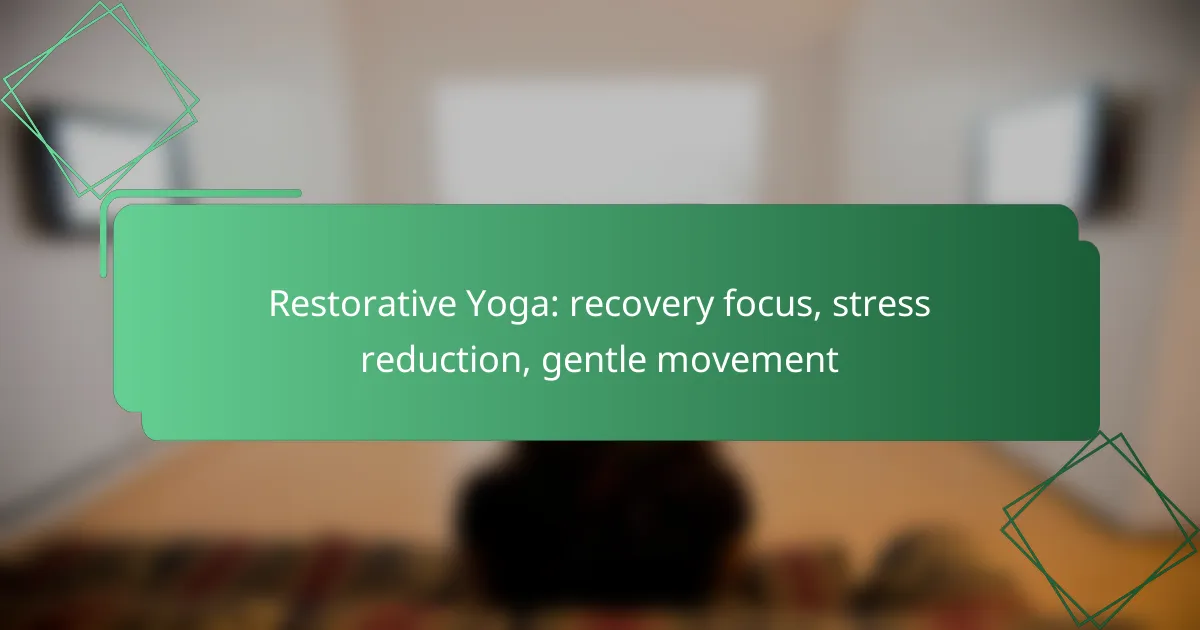Yin Yoga is a gentle practice that promotes relaxation and stress management through long-held postures targeting connective tissues and fascia. By encouraging deep stretching and mindfulness, it helps calm the mind and body, making it an effective tool for reducing stress levels while enhancing flexibility over time.
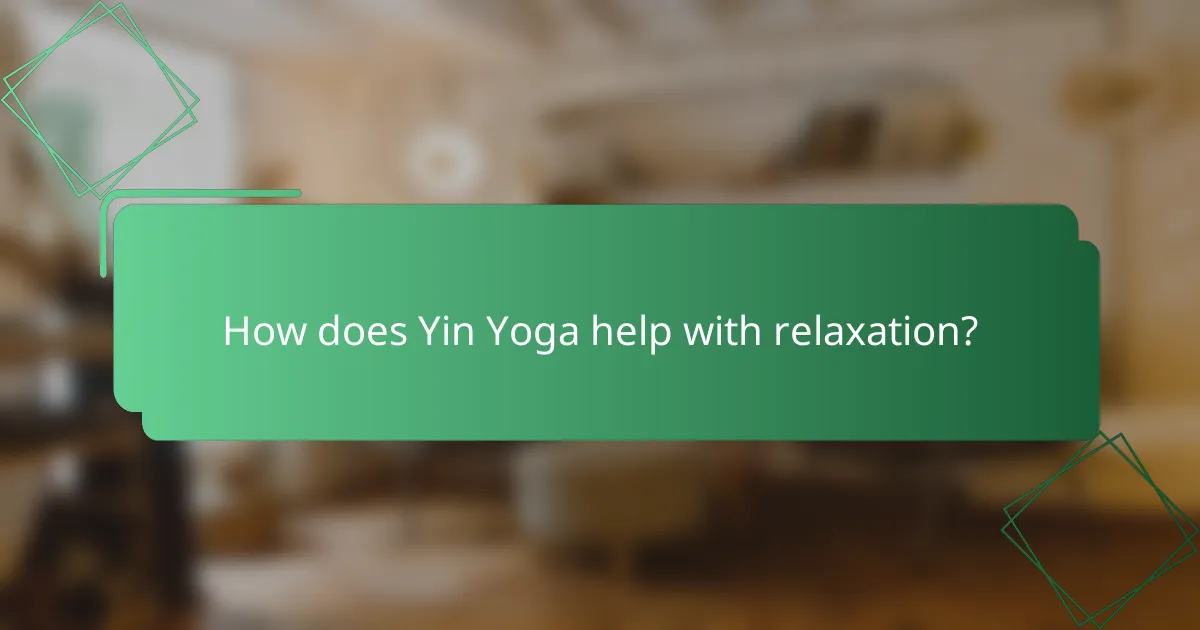
How does Yin Yoga help with relaxation?
Yin Yoga aids relaxation by promoting a state of calmness through long-held postures that target connective tissues and fascia. This practice encourages a deep sense of stillness, allowing the body and mind to unwind, which is essential for effective stress management.
Reduces cortisol levels
Yin Yoga has been shown to lower cortisol levels, the hormone associated with stress. By engaging in gentle, restorative poses, practitioners can create an environment that reduces the body’s stress response, leading to a more balanced hormonal state.
Regular practice may help maintain cortisol levels within a healthy range, which can improve overall well-being. Aim for sessions lasting 60-90 minutes a few times a week to experience significant benefits.
Enhances mindfulness
Yin Yoga enhances mindfulness by encouraging practitioners to focus on their breath and bodily sensations during long-held poses. This heightened awareness fosters a deeper connection to the present moment, reducing anxiety and promoting relaxation.
To cultivate mindfulness, consider setting an intention before each session and gently guiding your thoughts back to your breath whenever distractions arise. This practice can lead to improved emotional regulation and a more peaceful mindset.
Promotes deep breathing
Deep breathing is a fundamental aspect of Yin Yoga, as it helps activate the parasympathetic nervous system, which is responsible for relaxation. By focusing on slow, deep breaths, practitioners can reduce tension and promote a sense of calm.
Incorporate breathing techniques such as diaphragmatic breathing during your practice. Aim for a slow inhale through the nose, followed by an extended exhale, to maximize relaxation and enhance the benefits of each pose.
Encourages mental clarity
Yin Yoga encourages mental clarity by providing a space for introspection and self-awareness. The stillness of the practice allows thoughts to settle, leading to a clearer mind and improved focus.
To enhance mental clarity, dedicate time at the end of each session for reflection. Journaling your thoughts or simply sitting in silence can help solidify insights gained during your practice, contributing to a more centered and focused mindset in daily life.
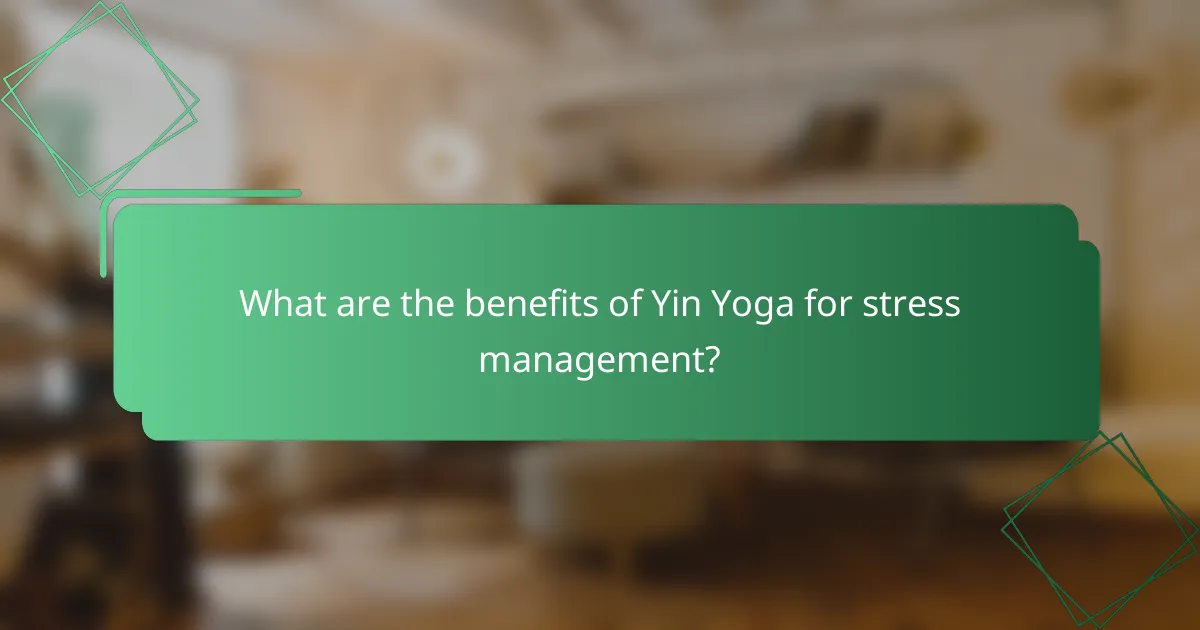
What are the benefits of Yin Yoga for stress management?
Yin Yoga offers numerous benefits for stress management by promoting relaxation and mindfulness. This practice encourages deep stretching and prolonged poses, which help calm the mind and body, making it an effective tool for reducing stress levels.
Improves emotional regulation
Yin Yoga enhances emotional regulation by fostering a deeper connection between the mind and body. As practitioners hold poses for extended periods, they become more aware of their emotional responses, allowing them to process feelings rather than suppress them.
This increased awareness can lead to improved mood stability and a greater capacity to manage emotional challenges. Regular practice can help individuals respond to stressors with a more balanced perspective.
Increases resilience to stress
Practicing Yin Yoga can significantly increase resilience to stress by teaching the body to relax and release tension. Through the slow, mindful movements and deep breathing techniques, individuals learn to remain calm in the face of stress.
Over time, this practice can help build a mental framework that allows individuals to approach stressful situations with a sense of calm and control, rather than feeling overwhelmed.
Facilitates muscle relaxation
Yin Yoga facilitates muscle relaxation by targeting the connective tissues and fascia, which often hold tension. The long-held poses allow muscles to release tightness and promote flexibility, contributing to an overall sense of physical ease.
Incorporating Yin Yoga into a regular routine can help alleviate chronic muscle tension and discomfort, making it easier to cope with daily stressors. Practitioners often find that this release enhances their overall well-being and ability to manage stress effectively.
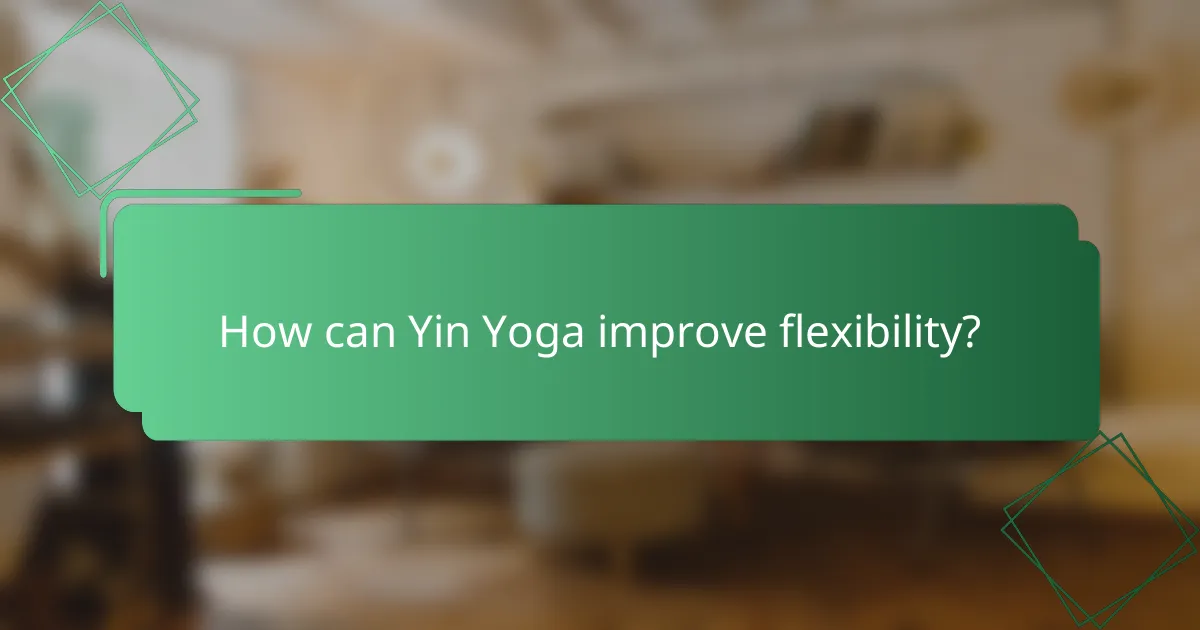
How can Yin Yoga improve flexibility?
Yin Yoga enhances flexibility by targeting deep connective tissues and promoting relaxation in the body. This practice encourages longer holds in postures, allowing muscles and joints to release tension and increase their range of motion over time.
Targets connective tissues
Yin Yoga specifically focuses on the fascia, ligaments, and tendons, which are essential for overall flexibility. By holding poses for extended periods, typically between three to five minutes, practitioners allow these connective tissues to stretch and adapt, promoting greater elasticity.
Incorporating poses like the Dragon or Butterfly can effectively target these areas. Regular practice can lead to improved resilience in connective tissues, reducing the risk of injury during other physical activities.
Increases joint mobility
Joint mobility is crucial for maintaining an active lifestyle, and Yin Yoga plays a significant role in enhancing it. The slow, mindful movements and prolonged holds help to lubricate the joints, promoting better fluid circulation and reducing stiffness.
Practicing poses such as the Caterpillar or Sphinx can help increase mobility in the hips, spine, and shoulders. Over time, this can lead to improved performance in other physical activities, making everyday movements easier and more comfortable.
Enhances overall range of motion
Yin Yoga contributes to an overall increase in range of motion by encouraging the body to relax and release tension. This practice allows muscles to lengthen and adapt, which can lead to more fluid movements in daily life and other forms of exercise.
To maximize benefits, aim for a consistent practice, ideally two to three times a week. Listening to your body and avoiding pushing into pain will help ensure a safe and effective journey toward greater flexibility and mobility.

What are the best Yin Yoga poses for beginners?
For beginners, the best Yin Yoga poses focus on relaxation and gentle stretching, promoting flexibility and stress relief. Key poses such as Child’s Pose, Butterfly Pose, and Supported Bridge Pose are accessible and beneficial for easing tension and enhancing mobility.
Child’s Pose
Child’s Pose is a foundational Yin Yoga pose that encourages relaxation and introspection. To perform this pose, kneel on the floor, sit back on your heels, and extend your arms forward while resting your forehead on the mat. This position gently stretches the spine, hips, and thighs, making it ideal for beginners.
When practicing Child’s Pose, focus on your breath. Inhale deeply and exhale slowly to enhance the calming effects. If you find it uncomfortable, consider placing a cushion between your thighs and calves for added support.
Butterfly Pose
Butterfly Pose is excellent for opening the hips and improving flexibility. To get into this pose, sit on the floor and bring the soles of your feet together, allowing your knees to fall outward. You can gently press your knees down with your hands to deepen the stretch.
As you hold Butterfly Pose, maintain a straight back and breathe deeply. If you experience discomfort, you can sit on a folded blanket or use blocks under your knees for support. Aim to hold the pose for several minutes to reap its full benefits.
Supported Bridge Pose
Supported Bridge Pose is a restorative pose that helps relieve tension in the lower back and opens the chest. To practice, lie on your back with your knees bent and feet flat on the floor, hip-width apart. Lift your hips and place a block or cushion under your sacrum for support.
In Supported Bridge Pose, focus on relaxing your shoulders and neck while breathing deeply. This pose can be held for several minutes, allowing your body to release stress. If you feel any strain, adjust the height of the block or remove it altogether to find a comfortable position.
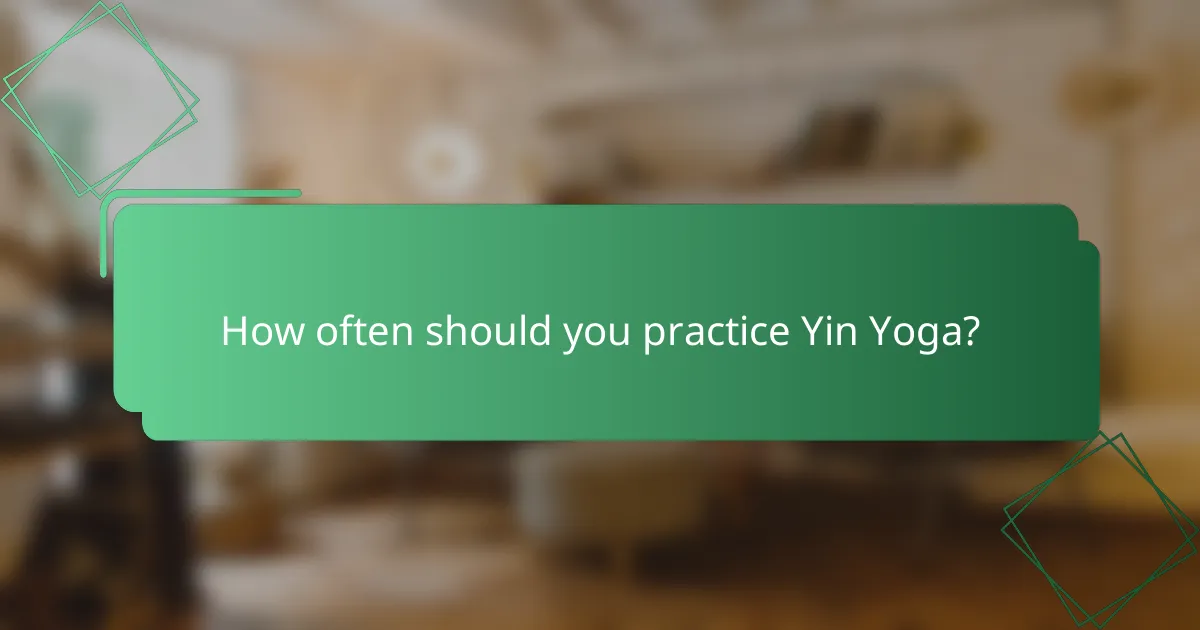
How often should you practice Yin Yoga?
Practicing Yin Yoga 2-3 times a week is generally recommended for most individuals to experience its relaxation and flexibility benefits. However, increasing the frequency to daily sessions can enhance stress management and deepen flexibility goals.
2-3 times per week
Engaging in Yin Yoga 2-3 times per week allows your body to gradually adapt to the postures and reap the benefits of deep stretching. This frequency is ideal for beginners or those with busy schedules, as it provides enough time for recovery between sessions.
During these sessions, focus on holding poses for several minutes to promote relaxation and flexibility. Consider incorporating a variety of poses targeting different muscle groups to ensure a balanced practice.
Daily for optimal benefits
Practicing Yin Yoga daily can lead to optimal benefits, particularly for stress management and improved flexibility. Daily sessions help to cultivate a deeper mind-body connection and can significantly enhance your overall well-being.
If you choose to practice every day, listen to your body and adjust the intensity and duration of each session. You might alternate between longer holds on some days and shorter, restorative sessions on others to maintain balance and prevent fatigue.
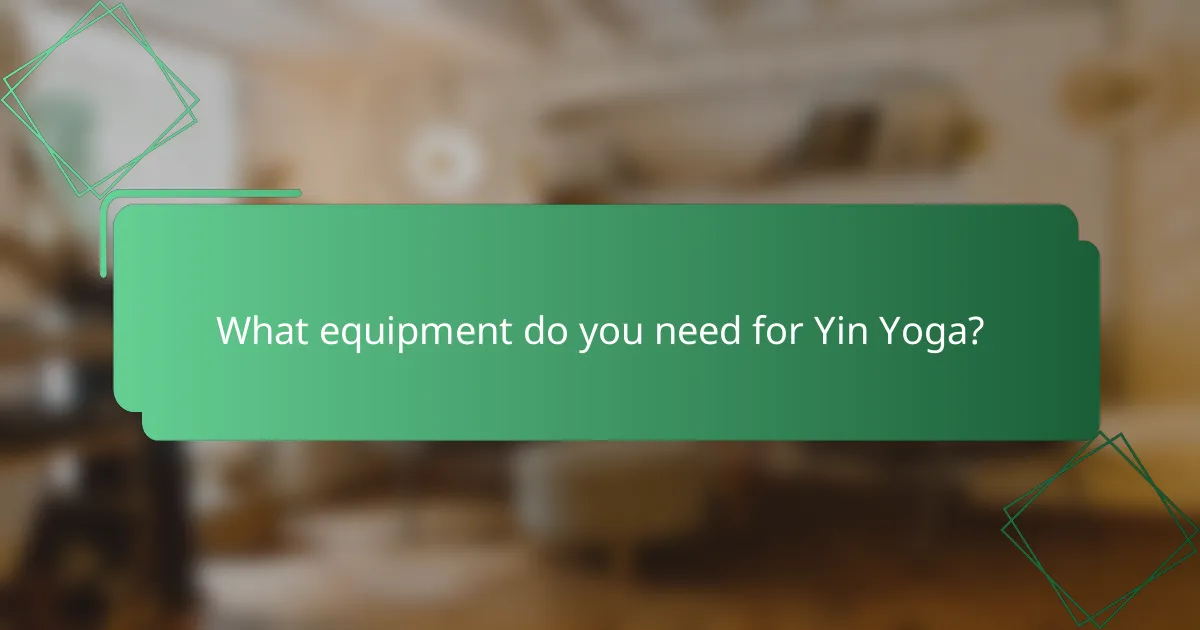
What equipment do you need for Yin Yoga?
For Yin Yoga, minimal equipment is required, making it accessible for most practitioners. Essential items include a yoga mat, props like blocks and bolsters, and a blanket for added comfort during long-held poses.
BODY REQUIREMENTS
In Yin Yoga, the body requirements focus on comfort and support to facilitate deep relaxation. A sturdy yoga mat provides grip and cushioning, while props like blocks and bolsters help maintain proper alignment and ease tension in the body.
When selecting props, consider your personal flexibility and comfort levels. For instance, beginners may benefit from thicker bolsters or additional blankets to support their bodies in poses, while more experienced practitioners might prefer less support to deepen their stretches.
DEPTH & COVERAGE
Yin Yoga emphasizes long-held postures, typically ranging from three to five minutes, which allows for deeper stretching of connective tissues. This practice can enhance flexibility and promote relaxation, making it essential to choose the right equipment that supports extended holds.
For effective practice, ensure your props are easily accessible and comfortable. A common setup includes a bolster for seated poses, blocks for support in forward bends, and a blanket for warmth and cushioning. Experiment with different configurations to find what works best for your body.

